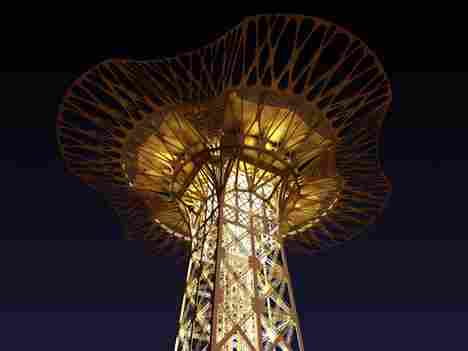The Bone is a conceptual building that delves into the advantages of large detached houses, high-rise buildings, and prefabricated houses. In short, it takes in the essentials of all the three types of living quarters and brings forth the best. This prefab building hosts large outdoor spaces including gardens and swimming pools.
Unlike ordinary apartment buildings, each home is detached from its neighbor so the residents don’t have to endure each other’s noise or invasions of privacy. Residents can decide the layout, the number of storey, and the size of their homes.
The structural elements (including the mega columns) are prefabricated and most of them are made of steel.
The entire building can be assembled and disassembled easily without harming its environment.
Designer: Paik Kunil
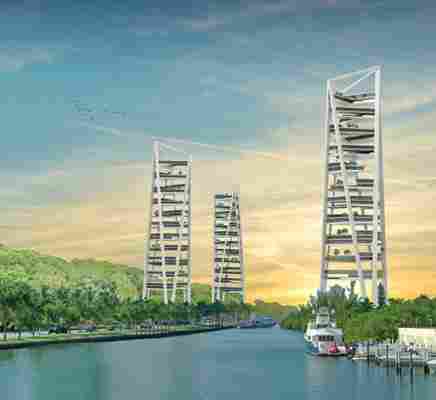
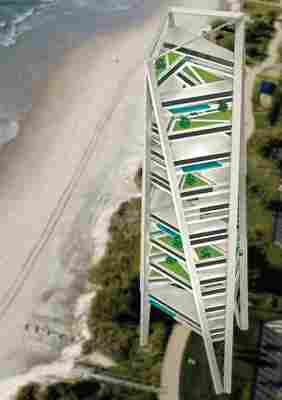
The Top 10 cabin designs of January are here to provide the perfect architectural escapism!
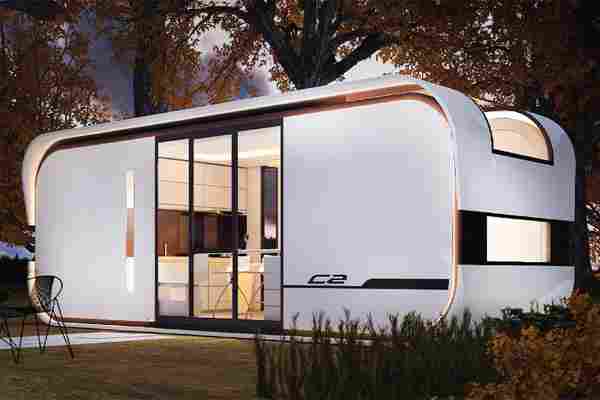
I love each and every kind of vacation, I do not have any prejudices against any, whether it’s by the beach, on a mountaintop, on a cruise in the middle of the ocean – every type of holiday has my heart. However, I do harbor a soft spot for cabin getaways! I would prefer nothing better than lounging about in a peaceful little cabin tucked away in the middle of the woods. Away from the world, society, and the Internet! It’s a beautiful chance to reconnect with nature, breathe in some fresh oxygen, and simply rejuvenate yourself with a clear mind and even clearer surroundings. I don’t know when I’ll be able to embark on a cabin vacation next, but in anticipation of one, here’s a list of the best cabin designs Yanko Design has seen this January, that are sure to give you the travel bug! From a cabin-style eco-hotel to a little pyramid-shaped cabin in the Finnish forest, we’ve got an assortment of cabin designs to match your every mood!
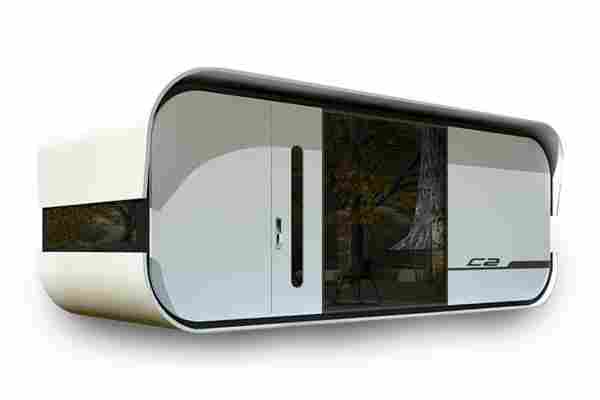
Cube Two is a 263-square-foot home that is designed for the future and smart living. This modern compact home is a prefabricated structure that already comes fitted with the latest home appliances that can all be controlled by an AI assistant named Canny. The exterior has smooth curved corners that give it a friendly vibe and the interior offers enough space for a family of four to live comfortably with two bedrooms and an open living area. To make it feel roomier, there is a skylight that runs across the ceiling and floods the space with natural light, and also provides a wonderful frame of the night sky.
Studio Puisto, a sustainable interior design studio based in Finland, recently debuted the first prototype of cabins soon to be part of a larger hospitality project called Kivijärvi Resort. The resort’s first completed cabin is called Niliaitta , which refers to the traditional storage structure built at the end of a high pillar, used by the Sámi people to store food and equipment, keeping it safe from the grasp of hungry or curious wildlife. In order to immerse guests of Kivijärvi Resort in the elements of nature as safely, but also as close as possible, Studio Puisto installed a floor-to-ceiling window that stands some distance from the cabin’s deep gable roof. From Niliaitta’s front-facing window, guests enjoy the most dominant landscapes as the cabin’s location was purposefully selected to offer the most unobstructed views of Finland’s forest and nearby body of water.
Raised up on stilts to avoid disrupting the natural landscape, all of the four different cabins were built using Passive house construction methods, each with homogenous shingle facades clad from locally-sourced, untreated Alsatian chestnut wood. Closest to the eco-hotel’s main building, which keeps an intimate culinary experience provided with homegrown produce as well as an exhibition showroom for local art and craftwork, guests can stay in the Low Grass Cabins . Designed for guests with limited mobility, the Low Grass Cabins comprise only one floor and were built to be universally accessible. Stationed into the gentle slopes at an angle, the Low Grass Cabins form upside-down, irregular pentagons in order to lock securely into the mountainside while still offering raised views of the valley below.
The Edward Bed & Breakfast is a cabin hidden amidst a lush 75-acre property surrounded by a massive wooded area that is used for the business’s various other staying experiences. Payam Shalchian designed the 80-square foot cabin and also co-owns the B&B. The theme is ultra minimalistic – the exterior is a simple wooden frame and the interior only houses essential furniture. The luxury in this case is the immersive experience you have within nature. To truly bring the outside in, the majority of the walls and ceiling panel areas are made of transparent plexiglass. The cabin is basically a sleeping zone and has another supplementary 64-square foot cabin which is a bathhouse containing a shower and composting toilet.
Studio Edwards’ Base Cabin gives the micro-living designs a whole new angle – literally! The angular shape of this tiny house on wheels makes it stand out while still being subtle. Inspired by the typical A-frame cabins in the woods and airstream trailers, this little home is built on a tri-axle trailer. “The A-frame is structurally efficient and uses less material than conventional portal framed buildings. Mute in its appearance and clad in black rubber makes it blend into its surroundings,” says the team. Don’t be fooled by its size, the Base Cabin comes fully equipped with a queen-size bedroom, living room, bathroom, and kitchenette. The angular paneling makes for a cozy bedroom setting with the A-frame roof. The roof lights help conserve energy and the accordion-like windows open up completely to make the home more spacious and airy.
Designed by Ortraum Architects , Kynttilä, which loosely translates to ‘candle’ is a quaint wooden cabin constructed alongside Lake Saimaa in Finland. The 15-square-meter cabin showcases a translucent, glazed end that provides soothing views of the water. Cross-laminated timber and larch boards were used to construct the exterior of the cabin. The interior boasts a floor-to-ceiling window and a built-in bed which allows you to laze around in bed and dreamily gaze at the lake every morning. The impressive glazed window encourages a connection with nature, making you feel as if the surrounding forest and waterbody are only a step away, and letting you relax in peace on the lakeside.
Úbáli, which means chameleon in Bribri, designed their first modular cabin, called Kabëk , specifically to befit mountain living. The first model for the Úbáli Tropical Living’s eco-tourism initiative dons an inclined roof, which allows the modular house to tuck right into mountainous terrains and offers travelers the chance to fully immerse themselves and their stays in the quiet of the wood. The modular cabin has a simple design layout of four walls that enclose a bedroom, living room, kitchen, bathroom, and dining room. The construction process also promotes frugality in regard to both time and money in that its modularity and simple layout caters to the prospect of easy and relatively affordable replication. Prepared for the most extreme of climates, Kabëk is assembled using industrial zinc, an extremely durable material that reforms nicks and blemishes thanks to its own hydroxyl carbonate protective layer. Additionally, industrial zinc’s levels of low toxicity are ideal for modular homes situated in natural settings. Industrial zinc is recyclable, durable, and an eco-conscious option for roofs. For example, rainwater that flows off Kabëk’s roof does not collect any hazardous waste on its way to the ground’s soil. Kabëk’s transportability is inherently green as the construction process preserves the natural settings on which Kabëk is situated. Furthermore, the materials used to build the modular home – industrial zinc, gypsum, and Densglass – form an ecologically sound structure that can withstand irregular changes in weather.
Just like the rest of us, Matt and Lisa of Tailored Tiny Co. have been dreaming about tiny homes for quite some time and Living Big in a Tiny House caught up with them soon after they constructed one of their own. Nestled high above an Australian forest, Matt and Lisa’s jet-black, two-floor cabin was constructed by the couple with help from a few friends. The tiny home’s black metal siding surely stands out, but amidst high eucalyptus treetops, it offers a more inconspicuous appeal, tying it up artfully with recycled hardwood trimming for the home’s protruding gables. Matt and Lisa’s home-on-wheels measures almost 30 feet in length and just about eight feet in width – the ceiling reaches sweeping heights of 14 feet, slightly above average for the conventional tiny home.
Set on a rugged, 8-acre site on the secluded side of the island, the Bowen Island House offers magical views of the lush, lichen-covered rainforest and the serene bay water that surrounds it. The island is secluded from the dense population of Canadian cities but recent developments on and around it have left the natural sanctuary vulnerable. The Office of McFarlane Biggar Architects + Designers (OMB) has created an environmentally friendly alternative with a small environmental footprint to encourage sustainable travel and construction. “The views and access to sunshine were really the key considerations that helped us position the home,” says the architect. The cabin’s position is perpendicular to the rocky coastline and captures the sun from east to west, while the stained black cedar cladding helps it visually recede into the forest.
City Cabin is a relaxing urban retreat in Seattle designed by Olson Kundig . The 2400-square-foot cabin was built keeping in mind that the client wanted to feel as if she was living in the wilderness, she wanted to feel connected to nature. The house is surrounded by lush gardens on the eastern and southern sides. The house showcases a central structure with two wings extending from it. The central area has been built with floor-to-ceiling windows providing an instant view of the surrounding garden area, and making one feel linked to nature. The clerestory windows allow sunlight to stream in freely, creating a light and airy space. City Cabin is a safe little haven placed cozily in the midst of a bustling city!
Sacré bleu! Eiffel Tower to get a make-over!
UPDATE: News of Paris-based Serero Architects’ installation at the top of the tower has been declared a hoax by La Societe d’Exploitation de la Tour Eiffel (SETE). I repeat Eiffel Tower Extension is a Fake!
Here is a fun idea, how can we get Parisians more passionate and worked up about their love/hate relationship with their most recognized and iconic symbol of French culture? Why, redesign it of course! Seriously, does anyone realize what sort of Pandora’s box of hell will be opened if this temporary re-design proposal from SERERO Architects for the Société d’Exploitation de la Tour Eiffel gets approved and actually built? Fearless are the few brave souls willing to face the wrath of the French when and if this design to celebrate the 120th birthday of Gustave Eiffel’s original inspiration gets approved. Aiming to “create a temporary horizontal extension of the third floor of the tower in order to increase the quality of the access of the public as well as experiencing the fantastic 360 degrees sight of Paris.”, the designers project will extend the top floor plate of the tower by grafting a high performance carbon Kevlar structure on it. The structure will be temporarily bolted to the slab without requiring any modification of the existing structure. For our Yanko Design readers in France, we are merely the messengers. If you want to track down the actual culprits, we cowardly offer their names for your goon squads to do what they please. Antoine Bourdeau, Louisa Gouesnard, Dusanka Malicevic Yoichi Ozawa, Jean-Philippe Sanfourche, David Serero, Taichi Sunayama, Fabrice Zaini. God be with you!
Architect: Serero [ Via: Bustler ]

